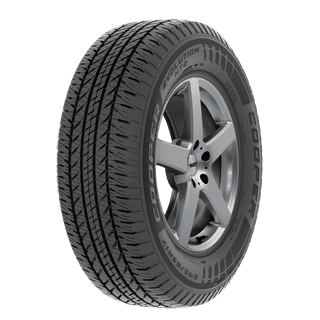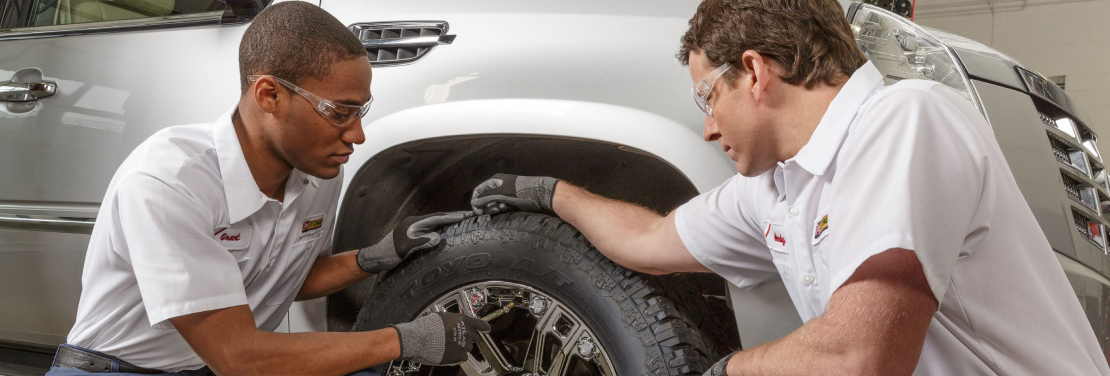Ideal Bargains on Discount Tires Morris IL: Top Quality Tires at Affordable Costs
Ideal Bargains on Discount Tires Morris IL: Top Quality Tires at Affordable Costs
Blog Article
Tire Service: The Effect of Weather Problems
When it comes to making sure optimum efficiency and safety on the road, recognizing the effect of climate conditions on tire solution is critical. In this discussion, we will explore the complex connection in between weather condition problems and tire service, shedding light on the relevance of weather-specific tire upkeep practices and factors to consider.
Heat and Tire Performance
When subjected to heats, tires experience changes in efficiency that can considerably influence vehicle safety and handling. The warmth created from extended driving or heat conditions creates the tire rubber to soften, resulting in decreased step life and boosted wear. As the rubber ends up being softer, the tire's grasp when driving decreases, influencing braking ranges and general grip. In severe situations, too much warmth can also trigger tire blowouts, posing an extreme security threat to the vehicle and its passengers.
In addition, heats can increase the procedure of tire aging, triggering the rubber to wear away faster. This can cause fractures, bulges, and various other types of damage that jeopardize the structural stability of the tire. To alleviate the results of heat on tire efficiency, vehicle drivers need to frequently inspect their tire pressure, rotate tires to make certain also use, and inspect for any type of signs of damages. Furthermore, using tires specifically designed to hold up against heats can assist preserve ideal performance and safety on the roadway.
Cold Weather Condition Results
Winter problems can have a considerable effect on tire efficiency and safety. As temperatures drop, tire rubber can solidify, causing lowered traction on icy or snow-covered roadways. In winter, tires might additionally lose air stress more quickly, which can influence handling and gas efficiency. Furthermore, cool temperatures can cause tire sidewalls to tense, enhancing the danger of damages from splits or other roadway hazards.
To reduce the effects of cool weather on tires, it is vital to frequently check tire pressure and inflate them to the supplier's recommended levels. Utilizing wintertime or all-season tires made for winter problems can likewise improve traction and grasp on icy or snowy roadways - tire shop morris. Correct tire maintenance, including normal assessments for wear and damage, comes to be a lot more important throughout colder months to make sure ideal efficiency and safety and security
Rainy Issues Influence
During rainy problems, tire performance and safety can be dramatically influenced by the wet road surfaces and lowered visibility. The walk pattern of tires plays an important duty in preserving grip on wet roads. Tires with damaged footsteps are much more vulnerable to hydroplaning, where a layer of water builds up in between the tire and the roadway surface, bring about loss of traction. To combat this, vehicle drivers must on a regular basis inspect their tires for sufficient walk deepness and take into consideration purchasing tires especially designed for damp problems.

Snow and Tire Safety And Security
When driving in snowy problems, having the appropriate tires can make a considerable distinction in security and performance. Wintertime tires are developed with unique rubber compounds and tread patterns to provide far better traction on snow and ice contrasted to all-season tires.
In addition to utilizing winter tires, it is critical to ensure they are correctly pumped up. Cold weather condition can trigger tire pressure to drop, affecting traction and handling (morris tire and alignment). Routinely checking and keeping the correct tire pressure is essential for optimal efficiency in snowy problems

Weather-Related Tire Upkeep
Weather-related tire upkeep encompasses a variety of techniques intended at guaranteeing optimum tire feature and longevity in different weather situations. One crucial facet of weather-related tire upkeep is tire stress regulation. Examining tire walk routinely and replacing tires when walk wear gets to a certain depth is important for preserving traction and stability in unfavorable weather condition.
Final Thought
To conclude, climate problems have a considerable effect on tire performance and safety and security. From warm influencing tire stress and use to cold weather condition reducing grip, it is important to take into consideration the climate when keeping and utilizing tires. Wet conditions can decrease grasp and bring about hydroplaning, while snow can raise the continue reading this danger of mishaps if tires are not correctly outfitted. Weather-related tire maintenance is essential in guaranteeing ideal performance and safety and security when driving.
In this conversation, we will discover the complex relationship between climate conditions and tire solution, shedding light on the relevance of weather-specific tire maintenance methods and considerations.

Report this page